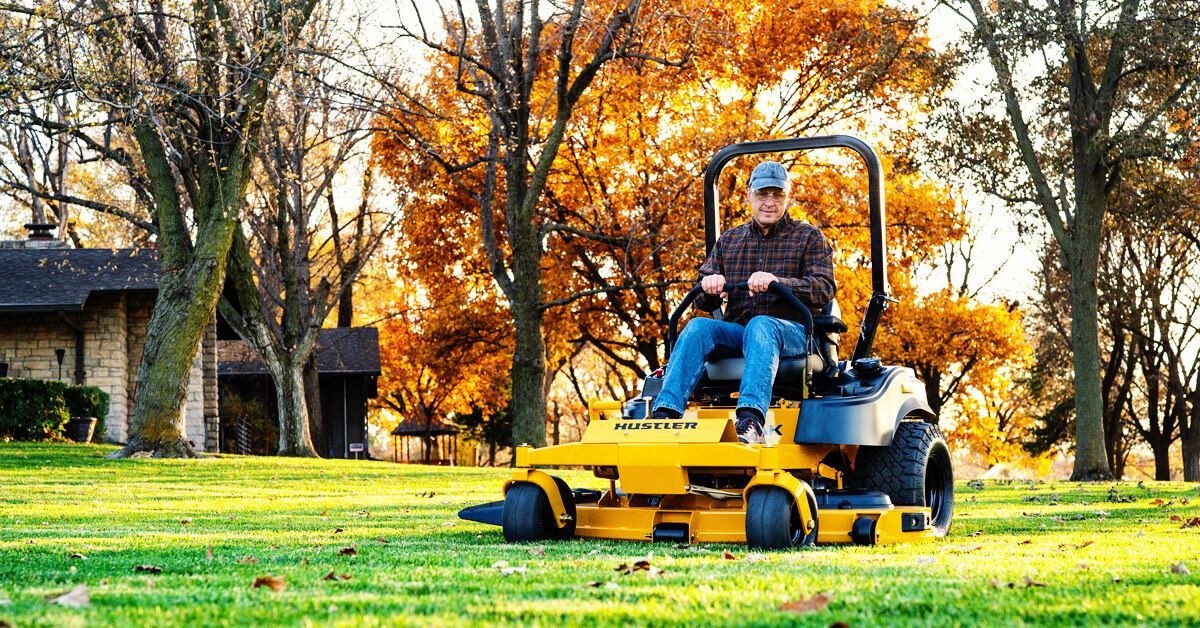How to Properly Store Your Outdoor Power Equipment for Winter
As winter approaches, it's time to think about the health of your outdoor power equipment. Proper storage during the offseason isn't just about keeping things tidy—it’s critical to ensuring your tools, especially those with engines, are ready to perform when spring rolls around. Ignoring proper maintenance and storage can lead to costly repairs and unnecessary downtime.
Whether you’re storing a lawn mower, chainsaw, or other essential gear, follow these simple tips to ensure your equipment stays in great shape.
1. Stabilize Lawn Mower Fuel
2. Change the Oil and Filters
Why It’s Important: After a full season of mowing, your engine oil collects dirt, debris, and particles that can damage the engine if left unchanged.
Steps to Change Oil:
- Drain the old oil into a container.
- Replace the oil filter, lubricating the new filter gasket.
- Add the correct type and amount of fresh oil.
Pro Tip: Take this opportunity to check and replace your air filter as well. A clogged air filter reduces engine power and fuel efficiency.
3. Maintain the Battery
Why It Matters: Batteries lose charge capacity when left idle for long periods. Connecting a battery tender or trickle charger prevents this issue.
Which Option to Choose?
- Battery Tender: Charges when needed and pauses when the battery is full.
- Trickle Charger: Applies a constant, low-level charge to maintain the battery.
Pro Tip: If you’re storing multiple tools, consider investing in a multi-bank battery tender for convenience.
4. Clean the Mower Deck
Why It’s Critical: Grass buildup under the deck can lead to corrosion, reduced performance, and uneven cuts.
Steps to Clean Your Deck:
- Remove the blades and clean the deck with low-pressure water.
- Sand off any rust and touch up bare metal with rust-resistant paint.
Learn more about caring for your mower deck in our comprehensive mower maintenance blog.
5. Inspect Belts and Blades
While your deck is off, inspect the mower belts and blades for wear and tear. Replace damaged blades and worn belts to avoid downtime in the spring.
Need replacement parts? Visit M&D Enterprises and Lawnmower Shops for genuine parts and accessories.
6. Upgrade Your Maintenance Game with Mechanic in a Bottle
Quick Fix for Fuel Problems: If you’re unsure about the condition of your fuel, add Mechanic in a Bottle to clean the fuel system and restore performance.
Curious about mechanic in a bottle? Check out our Mechanic in a Bottle blog.
Why Proper Storage Matters
By following these steps, you’re not just protecting your investment—you’re ensuring your equipment is ready to work hard next season. Proper maintenance and storage can save you time, money, and headaches when the busy spring season arrives.
Pro Tip: Pair these tips with a steel structure or portable building from M&D Enterprises to keep your equipment protected from the elements all winter long.
Don’t Wait Until It’s Too Late!
Ready to prep your equipment for winter? Visit M&D Enterprises for fuel stabilizers, battery tenders, oil filters, and more. Need help? Our expert technicians are just a call away.
Shop Now: www.mdenterprisesok.com














